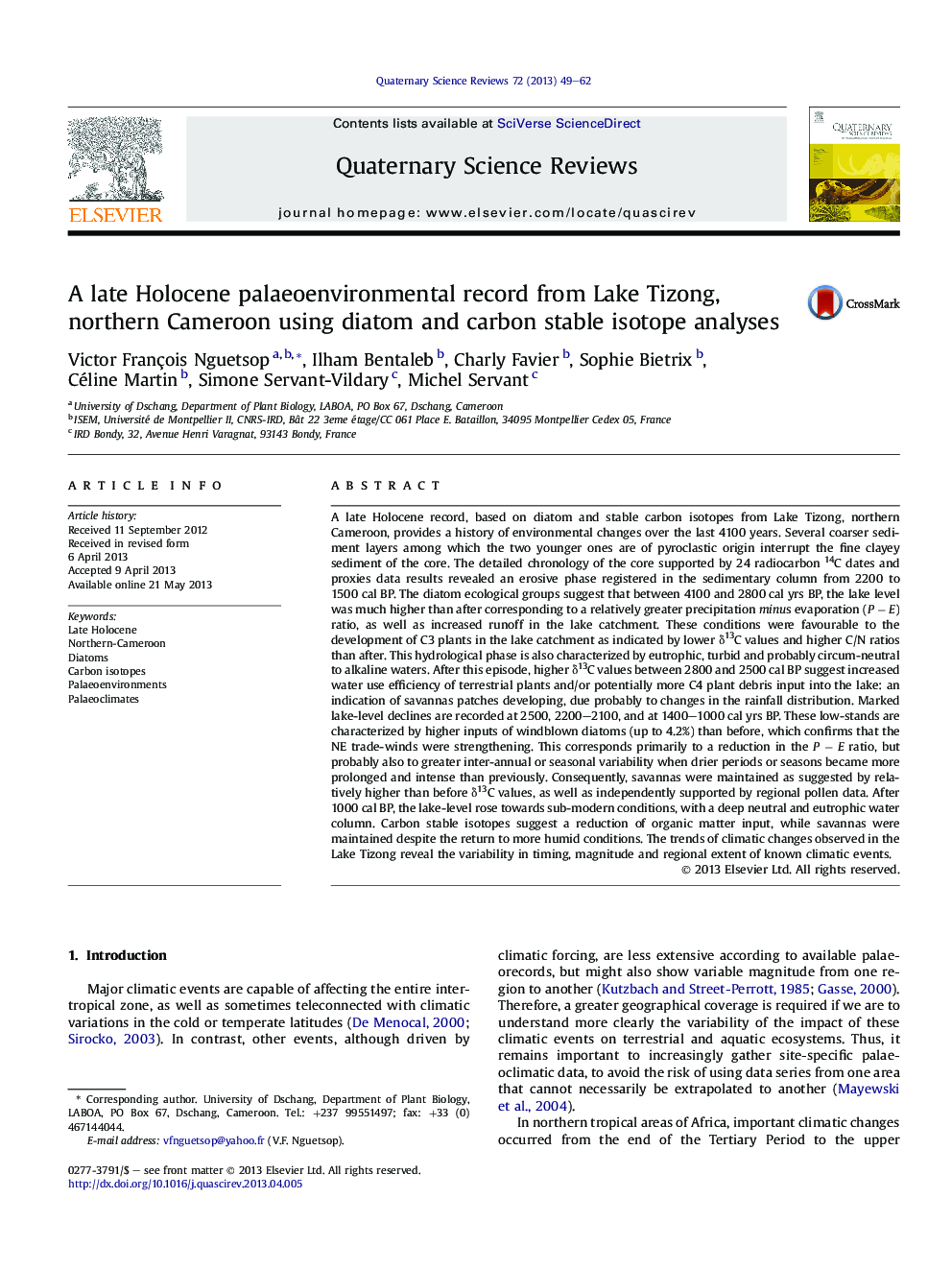| کد مقاله | کد نشریه | سال انتشار | مقاله انگلیسی | نسخه تمام متن |
|---|---|---|---|---|
| 6446643 | 1640862 | 2013 | 14 صفحه PDF | دانلود رایگان |
عنوان انگلیسی مقاله ISI
A late Holocene palaeoenvironmental record from Lake Tizong, northern Cameroon using diatom and carbon stable isotope analyses
دانلود مقاله + سفارش ترجمه
دانلود مقاله ISI انگلیسی
رایگان برای ایرانیان
کلمات کلیدی
موضوعات مرتبط
مهندسی و علوم پایه
علوم زمین و سیارات
زمین شناسی
پیش نمایش صفحه اول مقاله

چکیده انگلیسی
A late Holocene record, based on diatom and stable carbon isotopes from Lake Tizong, northern Cameroon, provides a history of environmental changes over the last 4100 years. Several coarser sediment layers among which the two younger ones are of pyroclastic origin interrupt the fine clayey sediment of the core. The detailed chronology of the core supported by 24 radiocarbon 14C dates and proxies data results revealed an erosive phase registered in the sedimentary column from 2200 to 1500 cal BP. The diatom ecological groups suggest that between 4100 and 2800 cal yrs BP, the lake level was much higher than after corresponding to a relatively greater precipitation minus evaporation (P â E) ratio, as well as increased runoff in the lake catchment. These conditions were favourable to the development of C3 plants in the lake catchment as indicated by lower δ13C values and higher C/N ratios than after. This hydrological phase is also characterized by eutrophic, turbid and probably circum-neutral to alkaline waters. After this episode, higher δ13C values between 2800 and 2500 cal BP suggest increased water use efficiency of terrestrial plants and/or potentially more C4 plant debris input into the lake: an indication of savannas patches developing, due probably to changes in the rainfall distribution. Marked lake-level declines are recorded at 2500, 2200-2100, and at 1400-1000 cal yrs BP. These low-stands are characterized by higher inputs of windblown diatoms (up to 4.2%) than before, which confirms that the NE trade-winds were strengthening. This corresponds primarily to a reduction in the P â E ratio, but probably also to greater inter-annual or seasonal variability when drier periods or seasons became more prolonged and intense than previously. Consequently, savannas were maintained as suggested by relatively higher than before δ13C values, as well as independently supported by regional pollen data. After 1000 cal BP, the lake-level rose towards sub-modern conditions, with a deep neutral and eutrophic water column. Carbon stable isotopes suggest a reduction of organic matter input, while savannas were maintained despite the return to more humid conditions. The trends of climatic changes observed in the Lake Tizong reveal the variability in timing, magnitude and regional extent of known climatic events.
ناشر
Database: Elsevier - ScienceDirect (ساینس دایرکت)
Journal: Quaternary Science Reviews - Volume 72, 15 July 2013, Pages 49-62
Journal: Quaternary Science Reviews - Volume 72, 15 July 2013, Pages 49-62
نویسندگان
Victor François Nguetsop, Ilham Bentaleb, Charly Favier, Sophie Bietrix, Céline Martin, Simone Servant-Vildary, Michel Servant,